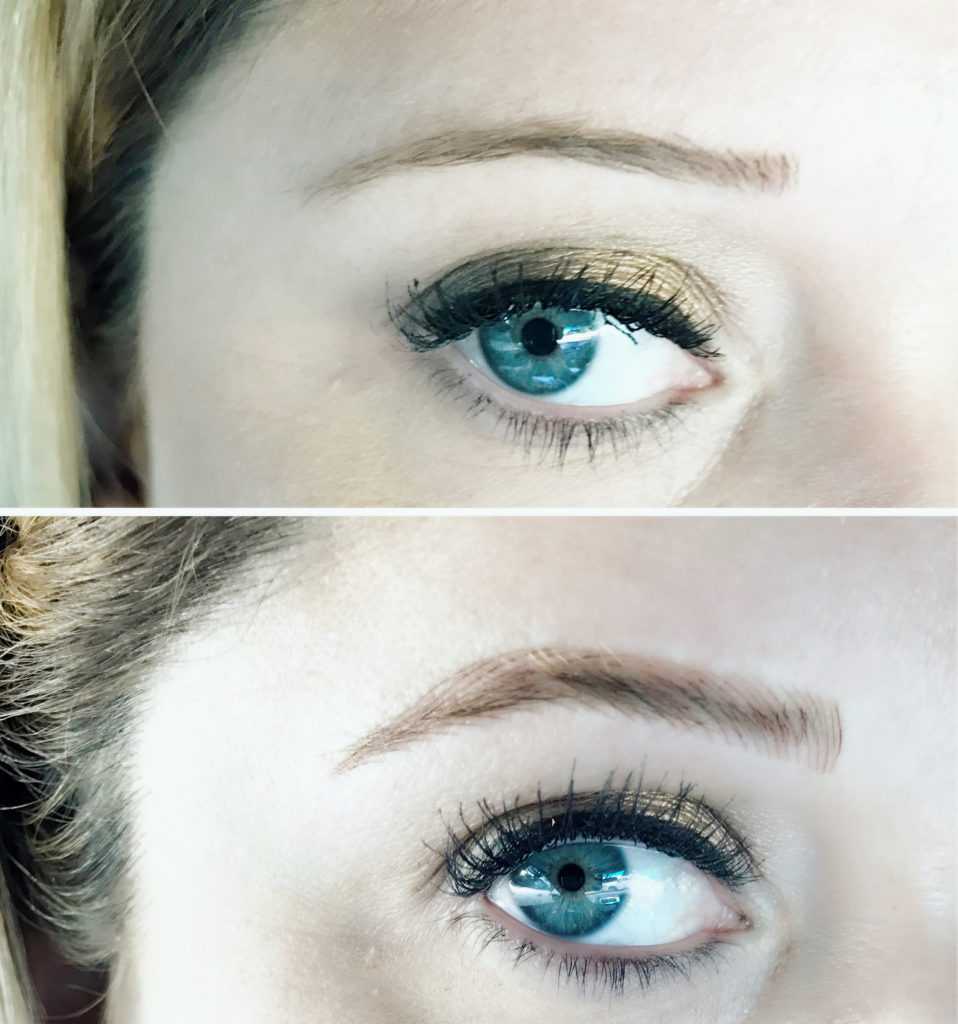
There is the potential for granulomas to form on the tattooed areas, as a result of the pigment, a foreign substance, being injected into the skin.

As with all forms of tattooing, the risks associated with microblading include the transmission of blood-borne pathogenic organisms (e.g., HIV, hepatitis C, staphylococcus aureus, herpes simplex), as well as short-term or long-term reactions to pigment ingredients. The most common complications and client dissatisfaction that result from any form of tattooing are a misapplication of the pigment, pigment migration, colour change, and in some cases, unintended hyperpigmentation. Safety precautions for microblading are similar to those for any other tattooing technique. A touch-up session is encouraged 6 weeks after the first microblading procedure, and every 12-18 months thereafter. The treatment lasts from 18 to 30 months, although it can sometimes last for up to 3 years. Like all tattoos, microblading can fade, depending on multiple factors, including the quality of pigment/ink used, UV exposure, elements found in skincare products, and/or medications. The microblading procedure is a semi-permanent tattoo.
#MICRO BLADING MANUAL#
Manual smooth shading (microshading) can also be added to go over and between the hair strokes to visually give the dimension of natural eyebrow thickness without any sharp contours on the eyebrows.
#MICRO BLADING FULL#
The artist sketches out the full brow with the appropriate thickness and arch height, to give the client a visual of what the finished brows will look like, and to set the outline for the microblading. The starting point, arch, and ending point are determined by the spacing of the eyes, such as close-set or wide-set. Measuring brow placement is a multi-step process, that begins by determining the center of the face and the set of the client's eyes. Microblading artists begin each appointment by discussing their client's desired look and needs before measuring and sketching out the placement of the eyebrows. Terminologies like 3D or 6D eyebrows gained traction during this period as well. By 2015, microblading had solidified its status as the preferred cosmetic method for eyebrow tattooing across Europe and the United States. The trend emerged notably in Singapore and Korea circa 2005, with subsequent adoption in Europe and the United States around 2010. The practice of introducing pigment via fine incisions into the skin's surface traces its roots back thousands of years however, its application for eyebrow enhancement gained prominence in Asia.

Microblading is also sometimes called embroidery, feather touch, microstroking, 3D eyebrow embroidery, or hair-like strokes. It deposits pigment into the upper region of the dermis, so it fades more rapidly than traditional tattooing techniques, which deposit pigment deeper into the skin. Microblading is typically used on eyebrows to create, enhance, or reshape their appearance in terms of both shape and color. Microblading differs from standard eyebrow tattooing, as each hairstroke is created by hand using a blade which creates fine slices in the skin, whereas eyebrow tattoos are done with a machine and single needle bundle.

Microblading is a tattooing technique and form of permanent makeup in which a small handheld tool made of several tiny needles is used to add semi-permanent pigment to the skin. ( Learn how and when to remove this template message) ( September 2018) ( Learn how and when to remove this template message) See Wikipedia's guide to writing better articles for suggestions. This article's tone or style may not reflect the encyclopedic tone used on Wikipedia.


 0 kommentar(er)
0 kommentar(er)
